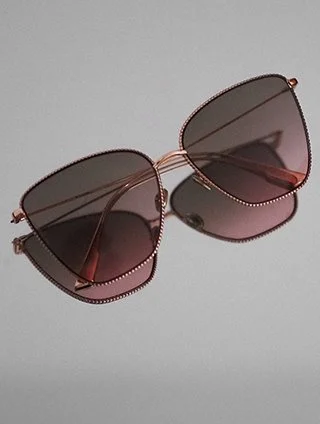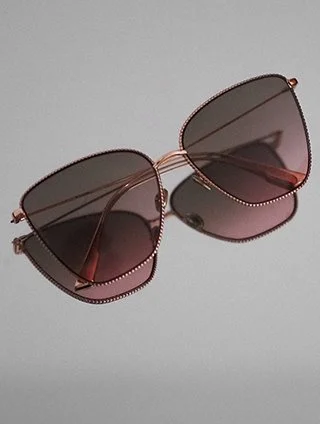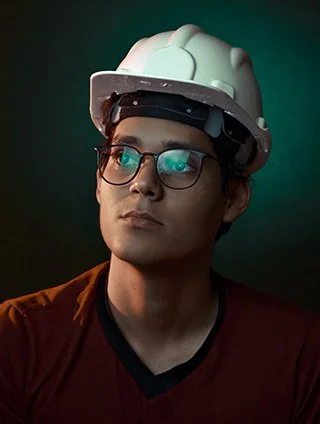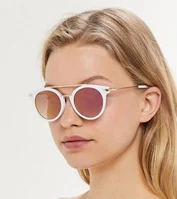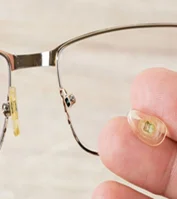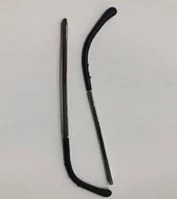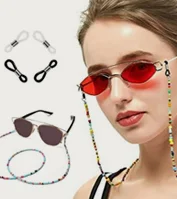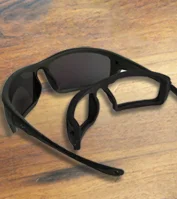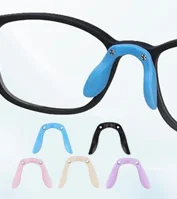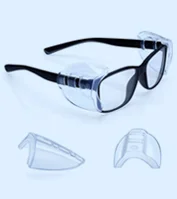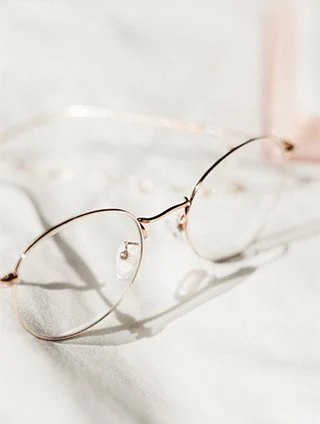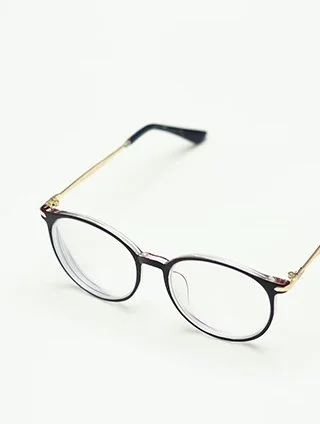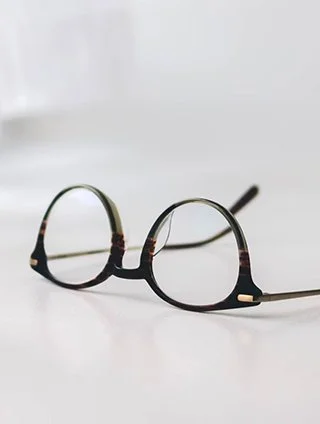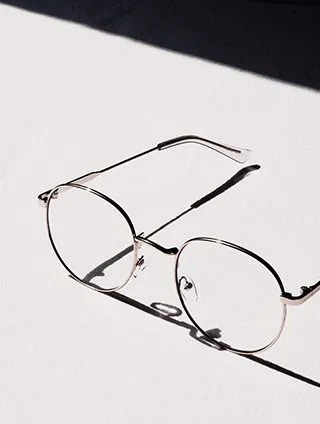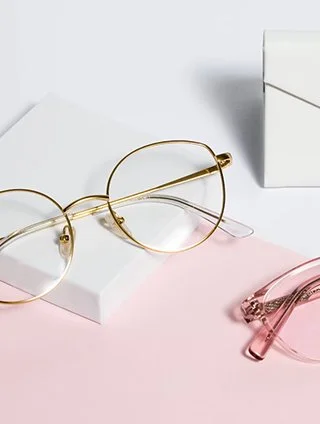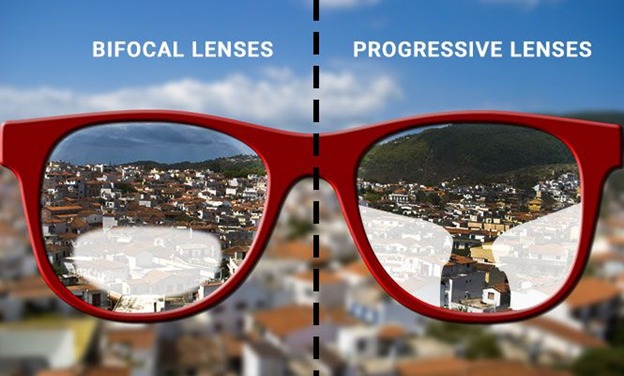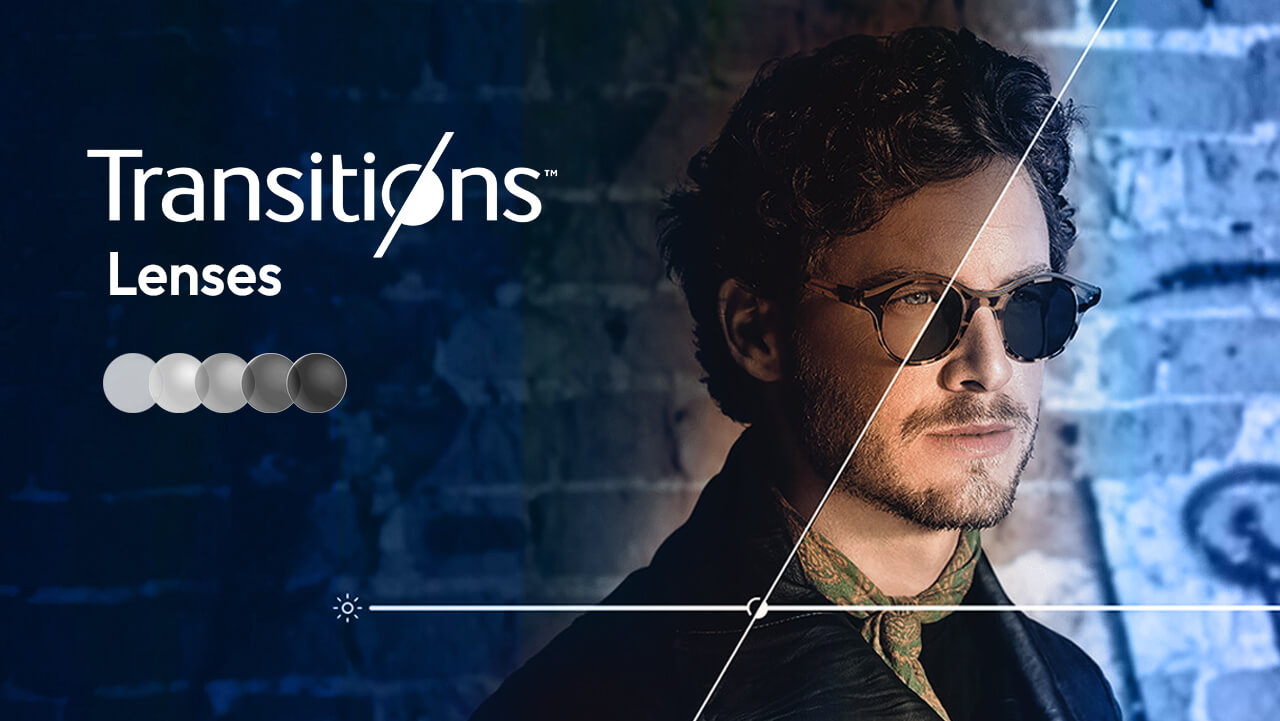You might want to learn more about progressive lenses or bifocal glasses if you wish to improve your vision. Both styles are worth researching because of their significant contrasts and parallels. You may find them online in a variety of colours and frame types. Additionally, you'll discover that they might be applied to several eye disorders. Although each has special advantages, you might gain more from one than the other.
You can determine which new pair of prescription glasses best suits your needs with the help of our handy guide. We at Eyeweb want you to be aware of your spec’s options. Let's discuss bifocal vs progressive lenses and their differences. Also, you'll discover more about the benefits and drawbacks of using bifocals and progressive lenses.
About Bifocal Glasses
For many years, people have worn bifocal lenses. Healthline claims that Benjamin Franklin created the first pair of them by fusing components of his distance and reading spectacles. Scientists and doctors have improved the functionality and inventiveness of bifocals over time. The most recent generation of bifocals is widely used to treat presbyopia, an eye ailment common in elderly persons. Presbyopia typically manifests as a change in vision or the need for reading glasses around middle age.
The conventional bifocal lenses feature two powers for vision correction if you look at them more closely. A power for farsightedness is included in the top lens, and nearsightedness is corrected in the bottom lens. It is not necessary to have an eye doctor's prescription to obtain bifocal reading glasses. Rather, these glasses help correct near eyesight by having a clear lens with a prescription part.

About Progressive Lenses
At Eeyweb, we offer progressive glasses. These speciality lenses have three distinct viewing regions with different levels of magnification and strength. You will discover that the lowest part of progressive lenses helps with nearsightedness when you check them. Because the eye passes through this part of the lens when reading or using a computer, they are shaped in this particular fashion.
The intermediate viewing area of the lens is located in the middle. Progressive lenses eliminate lines, which may give your vision a smoother, more accurate appearance. Many people find that the absence of lines improves the look of their lenses and frames.

Applications for Progressive and Bifocal Lenses
Presbyopia is a common age-related disorder that makes it difficult to focus on close objects. Bifocals and progressive lenses are used to treat it. For reading, working on a computer, and other tasks requiring a combination of close and far vision, these glasses are innovative. They give you clear eyesight without forcing you to constantly switch your designer glasses. These glasses easily adapt to your visual needs, whether they are from a computer screen or a book, which helps those with presbyopia and makes daily tasks easier. These are a few typical applications for these lenses; on to the benefits now. and drawbacks of progressive and bifocal lenses, respectively.
Benefits of Bifocal Lenses
We will first address the benefits and drawbacks of bifocal lenses before moving on to the topic of progressive lenses.
- People who require glasses to view objects both up close and far away will find that bifocals are useful.
- The transition between the upper and lower parts of the lens is smooth, so users only need one pair of glasses for everything rather than two. It facilitates people's ability to view objects from a distance and then quickly move to objects that are closer up.
- These glasses can be custom-made for individuals.
- These glasses function effectively; the top section aids in close-up vision, while the lower part is used for up-close viewing.
Cons:
Bifocal glasses give odd side effects, particularly where the two strengths meet. This annoys and bothers some people, particularly when they turn to the side.
- Getting used to adjusting bifocals can take some time.
- You have to determine which element of the eyewear is appropriate for each purpose. You may initially feel a little uneasy or perplexed about this.
- Concerns regarding the appearance of bifocals exist. Some people find it bothersome that there is a line visible on the glasses. If you want your spectacles to seem clean and crisp, this is an issue.
- Bifocals may not be the greatest for intermediate vision, such as when using a computer.

Benefits of Progressive Lenses
Progressive lenses are innovative special spectacles! They enable you to see with no additional glasses up close, distantly, and anything in between. Contrary to some other kinds of eyeglasses with lines on them, progressive lenses have a smooth, attractive appearance. Nobody will even realize you're wearing contacts!
With these glasses, moving your eyes around is simple and doesn't result in abrupt changes to the appearance of objects. Therefore, these glasses have you covered whether you're reading, operating a computer, driving, or performing other tasks. No more constantly changing glasses! These unique progressive glasses may take some getting used to, but when you do, they're quite useful and simplify life.
Cons:
In certain situations, wearers may experience blurring in their peripheral vision, especially in the early stages of acclimating to progressive lenses.
- Progressive lenses have an innovative design that some people find difficult to adjust to over time. Furthermore, it could require a lot of time to find the appropriate lens sections for different activities.
- Progressive lenses are frequently more expensive than single-vision or conventional bifocal lenses. Cost may be a significant factor, particularly for users with limited resources.
- Because progressive lenses require a particular frame size, some users may not purchase fashionable or small frames.
- Progressive lenses are adaptable, but in some circumstances, speciality lenses might be a better option for perfect vision.
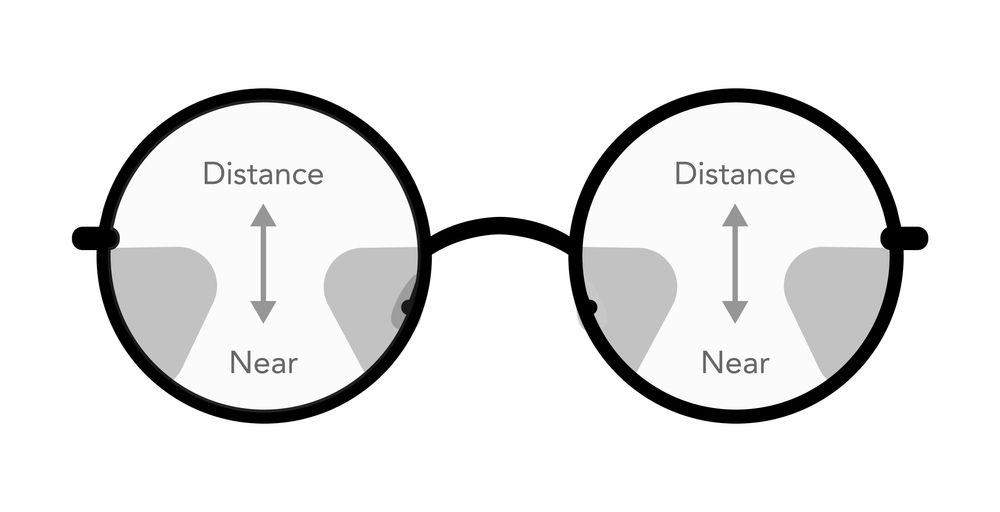
Which Lens Will Last Longer: Progressive or Bifocal?
The purpose of both progressive and bifocal lenses is to improve your vision for both near and far objects. But there's a difference in how they'll get you there.
Consider a route map. There are two paths you can take to reach your intended destination, which, in this case, is a sharp vision at any distance. You will choose the alternative route if it is less congested and easier to travel if the first one is congested with traffic and construction. So, bifocals or progressives—which style of eyewear will make your trip more enjoyable?
While debating between progressive and bifocal lenses, there are strong viewpoints. Let's find out each kind of eyeglass lens's function, appearance, wearer experience, and cost. To understand the advantages and disadvantages of each lens, we will identify a winner after each phase.
Why Choose Bifocal Over Progressive Lenses (Regarding Purpose)
The goal of progressive lenses and bifocal lenses is the same. These kinds of glasses create a multifocal lens, which combines multiple distance prescriptions into one lens. One portion of the lens corrects nearsightedness, or the difficulty of seeing objects clearly from a distance, while the other portion corrects farsightedness, or the inability to see objects up close. Progressive lenses correct vision at near, far, and centre distances; Bifocals only correct vision at those two distances.
Your eye doctor will probably suggest bifocals or progressive lenses if you have trouble seeing both up-close objects, like the details on a product label, and far-away objects, like the food menu when you're waiting in line at your favourite cafe. Age-related presbyopia is a common cause of the need for progressives or bifocals. This indicates that your ability to see up close is steadily fading. It is a normal aspect of aging because as you age, your eyes' lenses lose some of their flexibility.
But if you have astigmatism—an unevenly shaped cornea or lens—in addition to myopia, nearsightedness, hyperopia, or farsightedness, you might also require bifocal or progressive lenses. Contrary to presbyopia, an excessively short eyeball or a flat cornea causes hyperopia. Children are typically diagnosed with hyperopia.
Myopia affects approximately 25% of Americans, whereas hyperopia only affects 5–10% of people. Thus, myopia was present in many persons who got presbyopia in their late 40s or early 50s. Astigmatism and myopia are also frequently combined conditions. Progressives or bifocals may help if you experience both vision problems at the same time.
The best one: Draw. All is OK so far; the purpose of both sets of eyeglasses was to solve the same issue, which is the inability to see objects that are both close and far away.
Progressive vs. Bifocal Lenses: (Regarding Design)
Where these two kinds of lenses start to diverge is in their designs. The construction of each lens is shown here.
Bifocals
The design of the bifocal lens dates back many hundred years. They function by fusing two distinct lenses into one set of glasses. A reading glasses lens and a distance power lens were split in half and adhered together to create the very first pair of bifocals. As one might expect, this resulted in a line that could be seen where the two distinct prescription lenses joined.
Even while bifocals have advanced significantly, they still feature a similar visible line as earlier models. A D-shaped or circular part in the lower half of the bifocals represents the separate lens for close vision when you focus on a set of bifocal lenses. The top part is used for looking far away.
Bifocals only have two fields of vision: near and far, due to the two separate components of the lens. They do not cover the midway distance. This issue can be resolved using trifocal lenses. Their composition consists of three distinct lenses: one for close-up vision, one for distant vision, and one centre for intermediate vision. However, trifocals will show two distinct lines where the lenses join.
Progressive lenses
Although progressive glasses perform significantly differently from bifocals, the term "no-line bifocals" is misleading when referring to them. Instead of having two lenses fused, they are composed of a single lens, a far more recent technology. Progressive lenses so have an identical appearance to single-vision lenses.
Progressive lenses do not have two separate fields of vision, nor do they have a visible line. Instead, as you walk along the lens, the area of vision transitionally changes. Progressive lenses address middle vision besides distance and near vision at the top and bottom of the lens, which produces a far more natural-looking image than bifocals' two different fields of vision.
- Additionally, progressive lenses come in a variety of forms, which raises the likelihood that you may discover the ideal pair of prescription eyeglasses.
- Standard progressives use a bigger lens to achieve the same gentle transitions between all prescriptions that we have discussed previously.
- With a smaller lens, short-corridor progressives accomplish everything that progressives do. Short lenses will be more expensive because it is difficult to fit all those fields of view onto a compact lens.
- The purpose of computer progressives is to maintain eye comfort when using a computer screen. Blue-light filtering is a feature that certain computer progressive even offer.
- The field of vision is smoother and wider with premium progressives, which are lightweight. For those who have a complicated prescription, this is the ideal choice.
Progressives emerged victorious. Progressives are a winner because these glasses have a considerably more streamlined form since they are composed of a single lens that has no apparent line in the lens surface.
Progressive vs. Bifocal Lenses: (The User's Experience)
When compared to bifocals, progressive lenses frequently offer a smoother wearing experience. Bifocals induce a quick shift in vision between close and far fields of vision, which can produce image jumps in certain users. This can cause disorientation and occasionally nausea. Image jump might be bothersome to users even if they don't feel dizzy or queasy.
Progressives are also preferable for those who spend extended time in front of digital devices. Bifocals don't provide a medium-distance field of vision, and using digital gadgets is a middle-distance activity. However, because the reader's portion of the lens offers good magnification for up-close work, some users who perform detailed, close work prefer bifocals.
There will be an adjustment period regardless of whether you select progressive or bifocal lenses. You'll need to practice moving your head and eyes smoothly over the lenses to see comfortably at all distances.
Getting used to new lenses can take up to a week, regardless of whether you're switching to progressive lenses, bifocals, or even single-vision lenses. And there may be moments when the adjustment process is uncomfortable.
You may have nausea, dizziness, headaches, or blurred vision. Keep going! Following the period of adjustment, these symptoms ought to disappear. However, after a week if the problems persist, consult your optometrist. A fresh prescription might be necessary.
Progressives emerged successful.
Progressive vs. Bifocal Lenses: (Regarding Style)
The primary stylistic distinction between these two kinds of lenses is that bifocal lenses have a line that can be seen where they transition from far-to-close vision. Progressives have a single lens that improves the visibility of your face.
Because we believe that fashion should be a means of personal expression, we at Eyeweb have Top Frames that let you quickly alter the appearance of your spectacles. Making eye contact is also the most effective way to express oneself. Progressives won't interfere with your ability to express yourself to friends, family, and the workplace.
Progressive lenses are a winner.
Progressive vs. Bifocal Lenses: (Regarding Cost)
Progressives are more expensive than bifocals, but you can use them for a long time than bifocals. Progressives can therefore end up costing the same in the long run or less. Bifocals give you a reduced range of vision, so you can't adjust your prescription as much. You will require a new pair of glasses if there is even a tiny alteration in your near or distant prescription.
You might be able to wear progressive glasses through minor adjustments in your prescription because they provide a more gradual transition. You might only need to purchase a new pair of glasses if your eye exam reveals more significant changes in your vision. This could enable you to purchase new glasses less frequently, thus saving you money.
Bifocals are winner
What Makes Eyeweb the Best Option For Progressive Lenses?
Your eyes can smoothly transition between powers thanks to the progressive lenses we have here at Peepers. Without the "jump" that comes with bifocals or conventional trifocal lenses, you can adapt to your glasses more easily. Our thorough product testing guarantees that the glasses you receive are reliable and efficient. People select Peepers besides these clear benefits because of our:
Chic Frames
Our Nike glasses are stylish and up-to-date, as well as comfy and useful for correcting your eyesight. When you look your best, enjoy the colours and shapes of the frames that you love. With anything from cat-eye spectacles to traditional tortoiseshell patterns, we make it simple to express your individuality and improve your appearance.
Unobstructed Viewing Area
Our Guess glasses are made to be unique, with incredibly clear and extra-wide viewing zones at the upper part of the lens. This function facilitates easy distant vision while driving or taking in the scenery.
Blue Light-Blocking Filters
One factor that may exacerbate the signs of computer eye strain is the blue light that LED screens generate. Weary and dry eyes are among the symptoms. Without a blue light treatment, you run the risk of developing computer vision syndrome (CVS) if you spend a lot of time looking at a tablet or computer screen. A few of the most typical signs and symptoms of CVS are headaches and visual impairment.
Incredibly lightweight lenses
Though there are several materials used to make lenses, polycarbonate is a creative option that is suitable for all applications. Because they are constructed of incredibly lightweight plastic, you can put on them for an entire day without experiencing any discomfort, which is why we offer them at Eyeweb. When working or reading, make sure your glasses fit well and enjoy wearing them. They will feel fantastic as you travel or drive.
Dedicated Coatings for Improved Vision
For better eye care, our progressive glasses have specific coatings besides our blue light shielding technology. The anti-reflective coating on your lenses is made up of seven layers, which helps to minimize glare. Wearing Adidas prescription glasses inside or outside should make you feel at ease and contribute to your safety.
Our Eyeweb progressives come with UV-protection coating in addition to anti-reflective coatings to help shield your lenses from debris and grease. Your frames will endure even longer thanks to the coating's ability to resist UV rays.
Final Words
Progressive and bifocal lenses are revolutionary for presbyopia sufferers. Comprehending their differences, advantages, and drawbacks empowers customers to choose eyeglasses with knowledge. Additionally, users may preserve the longevity and best performance of these special lenses by following routine cleaning and care instructions, allowing them to see more clearly and comfortably throughout their daily lives.




